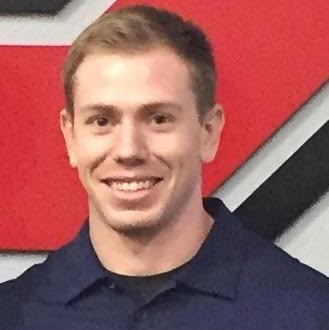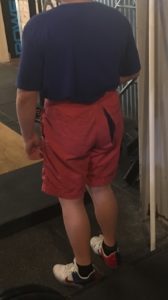7 Strength Training Program Tips
Sports Performance | Strength & ConditioningABOUT THE AUTHOR

RYAN LEIBREICH
Ryan is the Director of strength and conditioning at Pro Performance RX In Morgantown, West Virginia. Ryan has been working in the private sector with hundreds of youth athletes for the last 5 years. He is always excited to talk training and dig deep into the Why. Never stop learning, growing and adapting. In the great words of Bruce Lee be like water. To connect further with Ryan reach out to [email protected]
// 7 Tips for Writing Better Strength Programs
While things seem crazy right now we still need to deliver to our clients. If you want to build a better strength training program you need to weed out the gimicks and focus on what works. Here are some tips to building a better strength training program.


Paralysis by Analysis!
The root of all confusion. What exercises should I use: templates, models, block training, conjugate method, should I add in olympic weightlifting?
It happens to the best of us. We want things to be perfect and agonize over every detail. Then, before we know it, 3 hours have passed and we are more confused and somehow magically have less done than we started with. Well, here are a few strategies to help you solve that problem, save you time and allow you to get back to getting jacked and tan.
Your Title Goes Here
Your content goes here. Edit or remove this text inline or in the module Content settings. You can also style every aspect of this content in the module Design settings and even apply custom CSS to this text in the module Advanced settings.
#1 Ask Why
It seems so simple, but this is the place to start. Why am I doing this? What is my number one goal for this program? It is very difficult to set specific goals if we do not know our why.
#2 Work Backwards
Organize. Spend the time to write things down. What is your team size, skill level, training age, and how long do I have? Organizing these details will make your programs drastically more efficient so that when it comes time to put the rubber to the road, you have a clear path and know exactly who you will be working with. Once you know all of the stipulations of time, athletes, etc, then you can work backwards to start setting up an effective program. General to specific.
Example- I know I have 50 9th grade (13-14 year old) athletes, zero training experience for 1 hour, twice a week, for 8 weeks. I will then write out 8 weeks, 2 days (most likely two 4 week blocks). We don’t need to get fancy. They have no prior training experience, so we will stick to a linear progression and introduce basic lifts; two total body days a week. Great, whats next? Implement the exercises.
#3 Fill the Big Buckets First
What are buckets? Think of a program as a table with a lot of buckets on it. There are many different types of buckets (ones with holes, big ones, small ones, etc.) Here is the catch: you only have a limited supply of water to fill them up. Which ones do you pick? You can only fill them up so far before it spills over and becomes a mess, so we must choose wisely. Now, relate this to a strength and conditioning program. An athlete can only handle so much intensity, volume and exercises before they get overwhelmed and exhausted (mentally and physically overflowing).
This is where we take a step back and analyze.There is no need to try to do everything. Pick what is really important. Basics are always important. These basics are the principles our programs should be based on. Do we have the basics covered: push, pull, hip hinge, squat, carry, and core? Only once the basics are established should we ever consider adding more. Cut out the excess.
#4 Adapt
We are not good coaches unless we can modify our plans.
After each session modify and make notes of what worked well and what did not. For example, did front loaded split squats crush every athlete? If that is the case, the next session, the athletes should move back to goblet squats to establish a stronger base. This still qualifies as a squat pattern and fills that bucket. You can not be afraid to make changes. If you get a flat tire you pull over and fix it so the car does not get damaged worse. If you see some problems with the program, stop and make a tweak so the athletes do not end up injured.
#5 Minimal Effective Dose
Less is more in regards to sets and repetitions. Remember that we only need to do enough to get the required response. If 3 sets of 5 gets our athletes stronger, then forget about the 5 sets of 5 until it is necessary. If we do more than is necessary, you are just digging a bigger recovery hole that the athletes are going to have to dig out of, thus making our programs less effective.
#6 Recovery/Rest
You don’t get stronger from the workout, you get stronger from recovering from the workout. Have adequate rest between exercises and sets to allow the athletes to lift heavy loads. Don’t go too high on the reps (1-5 is plenty). Now, I know you can still get strong at 6, 7, 8, 9 reps and more, but let’s keep it simple and realize that one of the best and fastest ways to get strong is to lift heavy loads for low reps. We can all agree on that. To keep your athletes from just standing around between sets give them another exercise, or stretch, to keep them active and busy. For example, I will have my athletes do heavy squats paired with band pull aparts.
Recovery doesn’t mean just in the weight room too. Educate athletes on sleep, nutrition and low level movements to recover.
#7 Lift Heavy


(You’re doing it right if you rip your pants)
It seems pretty obvious, but is often overlooked. You want to write better strength programs and get athletes strong right? Then make sure you have athletes lift heavy relative to them (their body weight, size, strength,etc.). Attack both strengths and weaknesses. Low sets and reps always seem to get the job done. I have seen it work a thousand times.
Wrapping it all Up!
To summarize, we always go back to the “keep is simple” method. Create a principle based system, analyze the system (did you fill the big buckets?) and then don’t be afraid to adapt and modify. There are many methods and systems that work. Use the one that best fits you, your staff and your athletes. Lift heavy, train strong.
READY TO TRY TRAINHEROIC?
Our powerful platform connects coaches and athletes from across the world. Whether you are a coach or trainer looking to provide a better experience for your clients, or you’re an athlete looking for expert programming, click below to get started.
Want more training content?
More coaches and athletes than ever are reading the TrainHeroic blog, and it’s our mission to support them with the best training & coaching content. If you found this article useful, please take a moment to share it on social media, engage with the author, and link to this article on your own blog or any forums you post on.
Be Your Best,
TrainHeroic Content Team
HEROIC SOCIAL
HEROIC SOCIAL
TRAINING LAB
Access the latest articles, reviews, and case studies from the top strength and conditioning minds in the TH Training Lab

